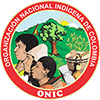Bará
OTHER NAMES:
"people of peace" waimaja, posanga-mira. North Barasana.
LANGUAGE:
Bará (waimaja, waimasa, waymasa, waimaha, northern barasano). It belongs to the Tucano Oriental linguistic family.
GEOGRAPHICAL LOCATION:
The Bara indigenous people are located in the northeastern part of the Amazon, exactly in the department of Vaupés, Colorado, Papuyurí, Yapú, Inambú, Macucú and Tiquié rivers.
POPULATION:
Its population is estimated at 208 people (DANE 2005) They are divided into the following clans: Waimasa, Wamutañara, Pamoa, Bara. Wañaco and Bupua - Bara.
CULTURE:
In recent years there have not been enough studies on the trajectory of this group or its current situation. However, they have been classified in ethnography as part of the so-called cultural complex of Vaupés, a characteristic that resembles other nearby groups, belonging to the Tucano Oriental linguistic family such as the Tatuyo, Desano and Wanano.
Within its worldview, each species of animals has its maloka and its owner. After death, the soul leaves for the maloka of the ancestors. The maloka is exclusively for people, for this reason those who do not consider themselves totally human, as is the case of newborns or stung by snakes, cannot enter until the Shaman, a figure of great importance in the community, Do not grant them this condition. According to ethnography, one of the most prominent ceremonies was that of the “Dabucurí” or exchange ceremony, where visitors brought meat and fish and the hosts offered cassava beer.
ORGANIZATION:
The sociopolitical structure of the Bara people responds to a complex system of hierarchical organization, divided into patrilineal lineages. However, this structure has been gradually modified, due to the pressure of the settlers in the area, which have forced them to adopt forms of organization that are totally opposed to the traditional ones. For example, in ancient times the power fell on the shaman or curaca, who not only governed the spiritual destinies of the ethnic group, but also made all kinds of decisions of transcendence. Its form of political organization is supported by the council, whose members are elected for a period of one year.
ECONOMY AND HOUSING:
The economy of this group is based on logging and burning, hunting, fishing and gathering. Its main crop is cassava followed by bananas, yams, sweet potatoes, sugar cane, dyes and medicinal plants. They also raise chickens for trade and some wild birds that use their feathers for ritual decorations. For fishing they use the hook, bows, arrows and traps. Growing hallucinogenic plants is always a male trade, while basketry and everything related to wood, and pottery is exclusive to women.
THEIR HOUSING:
By the mid-eighties, this group still lived in malokas and in nuclear villages of 12 to 60 people. It is possible that at present, like other towns in the region they have adopted the model of the town where the houses are grouped around a maloka, a school and a soccer field.
Sources:
Arango y Sánchez. Los pueblos indígenas de Colombia 1997.
Dane: Censo 2005-.
Instituto Lingüístico de Verano, 1979:1.
Telban, Blas. Grupos étnicos de Colombia, etnografía y bibliografía, tercera colección 500 años, ediciones Abya-Yala, Movimientos Laicos para América Latina, Quito, Ecuador, 1988.
Fundación Hemera - Etnias de Colombia
Los Pueblos Indígenas de Colombia en el umbral del Nuevo milenio – DNP – Departamento Nacional de Planeación
-Recuperado de: TodaColombiaPuebloBARA
-Portal de lenguas de Colombia. Awapit.



